The F-82 Twin Mustang is possibly one of the oddest American aircraft to go into full production.
Yes, it looked like two Mustangs crudely stuck together.
But, don’t get fooled by its original appearance.
In fact: The twin Mustang holds marks and achievements of all types.
This post contains nine facts that you may not know about.
Let’s check them.
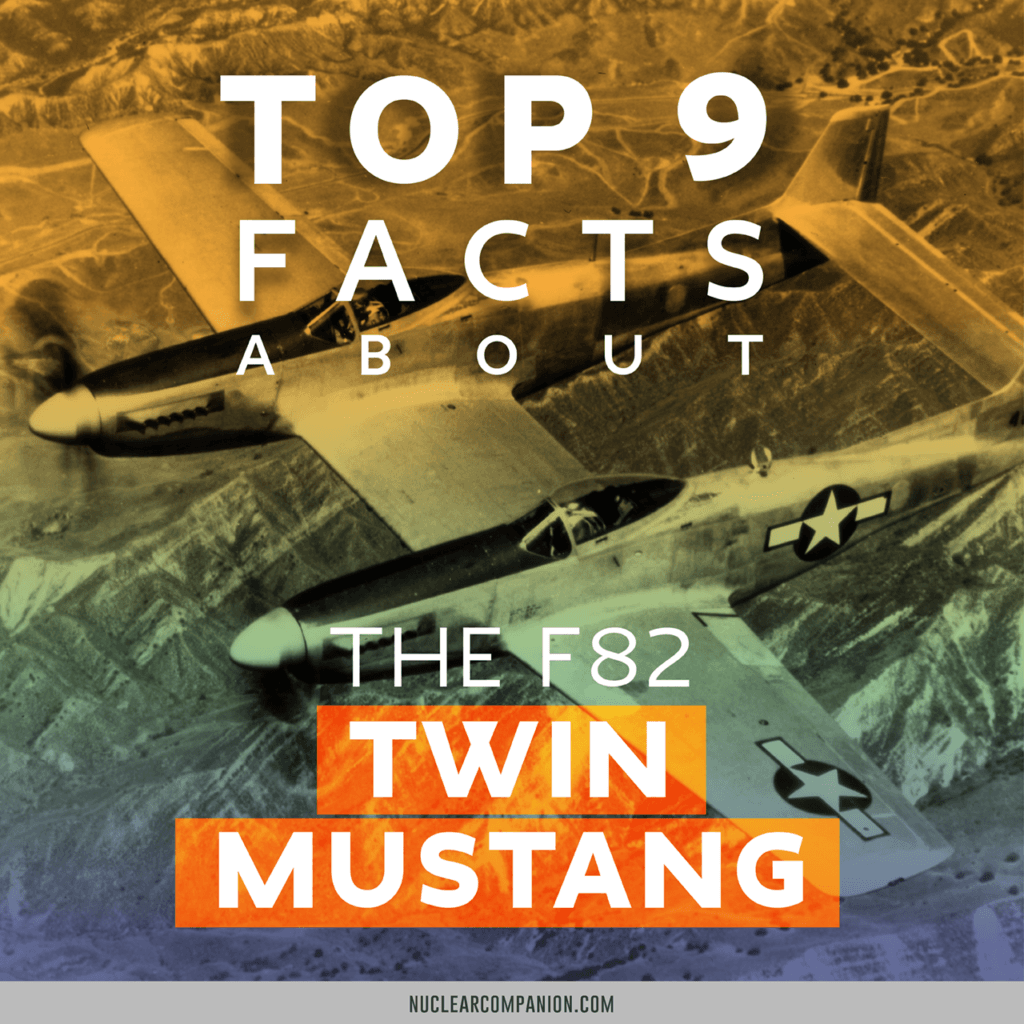
1- It was the most successful heavy fighter ever produced
During the Second World War, North American plane designers were looking for an aircraft able to operate as an escort for allied bombers. Moreover, the main thing they were looking forward to was one that could carry enough fuel. They required a heavy fighter able to hold on flights longer than ever before.
The thing is that the distances of the war in Europe felt soft compared with those that the enormous proportions of the Pacific supposed. Some missions could require up to twelve hours of flight!
Back then there wasn’t a similar plane that could perform such a task. Both the P-51D Mustang, the base for the F-82, and the well-known Lockheed P-38J Lightning, suffered from poor autonomy: 850 & 585 miles, respectively.
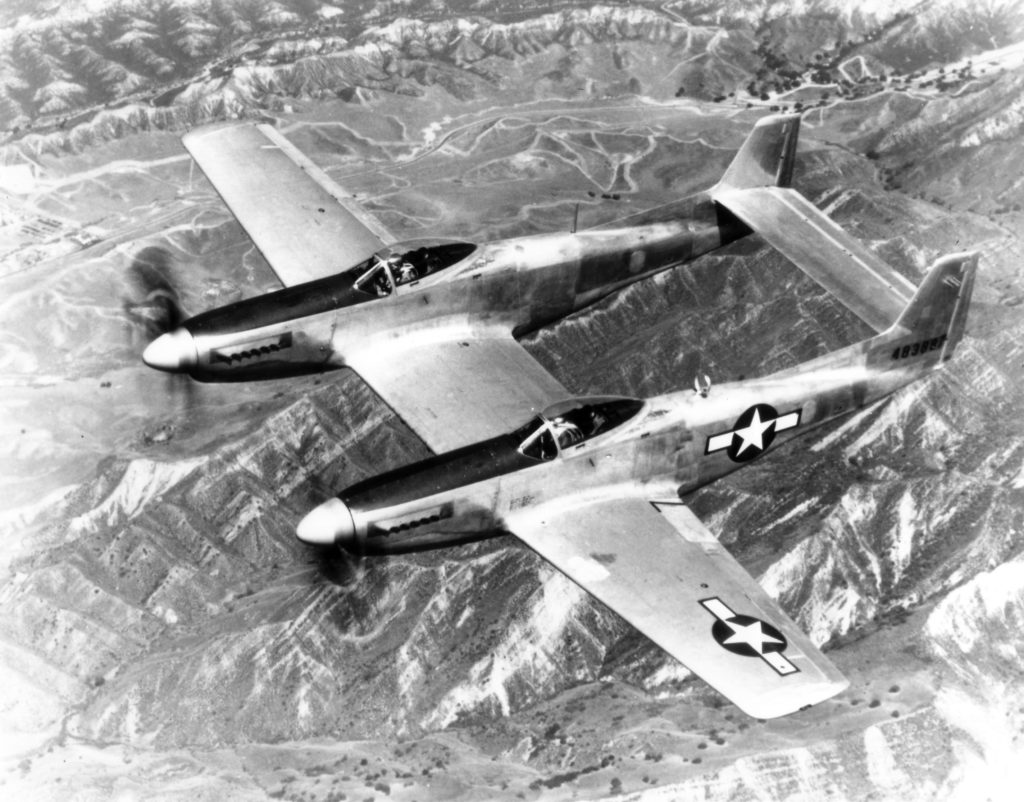
That’s where the F-82’s specifications shined. With the aid of external fuel stores, it could even put up 3,500 miles of range! The F-82 stood up as top-notch regarding performance, and it did it big time.
Along with the mentioned P-38 Lightning, and the British de. Havilland DH.98 Mosquito, the F-82 was one of the few “heavy fighters” that succeeded. Truth been told, there weren’t many actually reliable twin-engine aircraft. Excluding those three, heavy-fighter failures can be counted in big numbers.
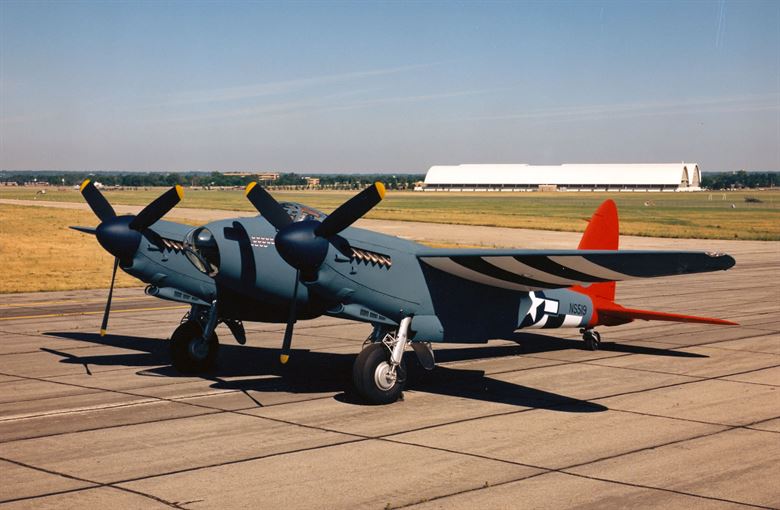
Their main issue was that they couldn’t keep up with the agility of the single-engine aircraft. This lack of maneuverability was a problem that had planes such as Germany’s Messerschmitt Bf 110.
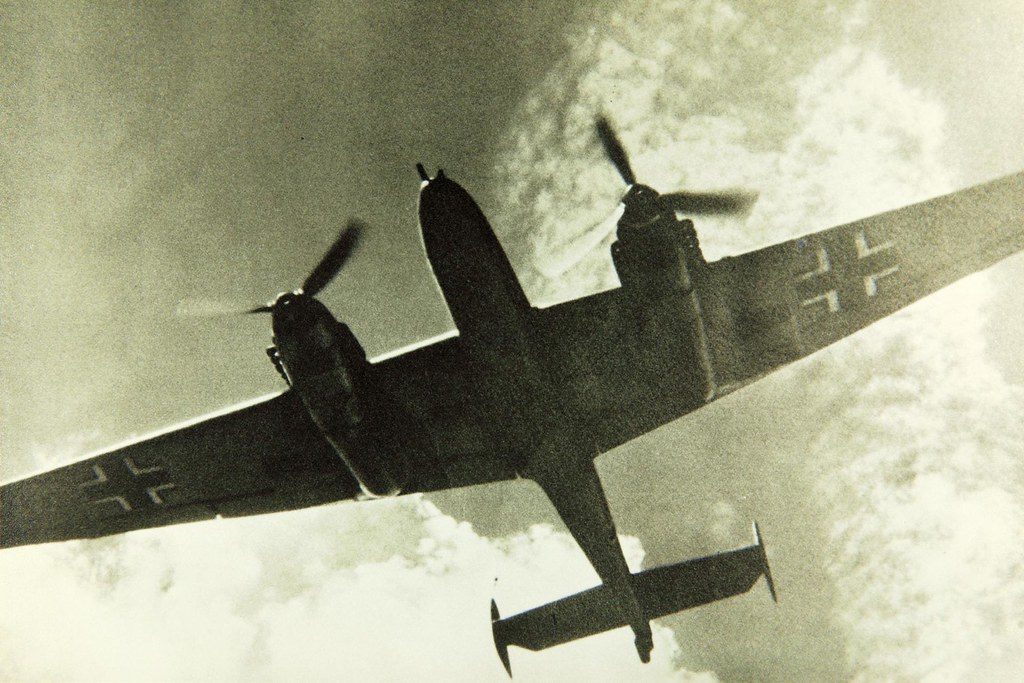
On the other hand, Britain’s Westland Whirlwind, although praised for its speed, had performance issues at high heights. This compromised its reliability and ended up serving as a bomber. Even the Kawasaki Ki-45, a Japanese twin-engine, lacked for its design of good visibility and had vibration problems.
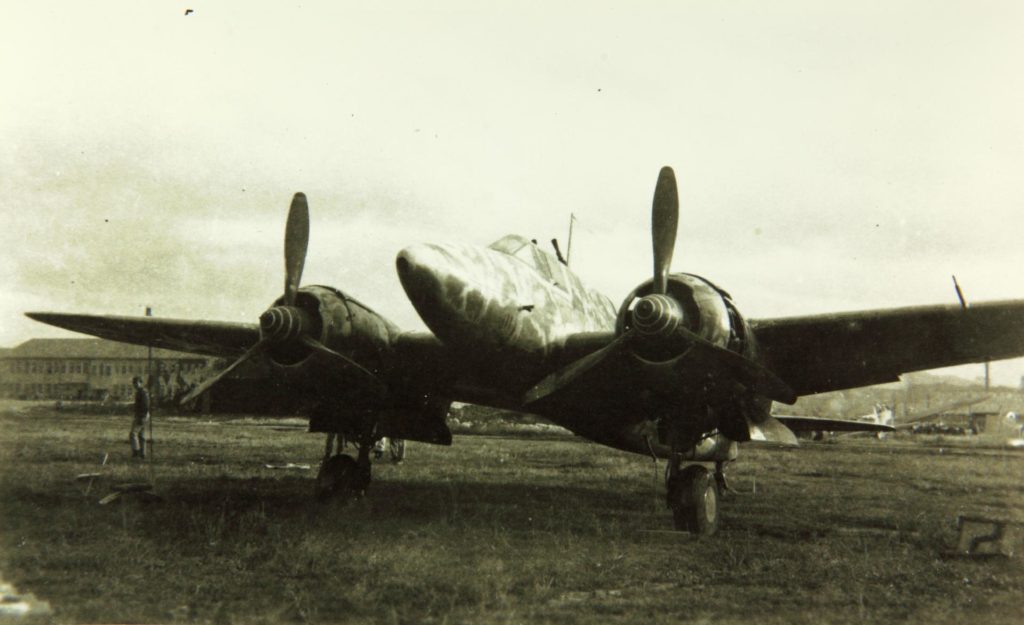
None of these heavy fighters models stood a chance compared to the qualities of the F-82. Taking account of its performance and reliability, it outlasted all of them.
It was the US Air Force’s, and the aviation industry’s in general, ideal “heavy fighter”. The “sad part”, though, is that it did so when the war was already over.
Adding to that, the jets were just around the corner. Not many years later, the F-82 was out of aerial warfare.
That been said, one could think that the F-82 couldn’t display all it had to offer. Designed to fight in the Pacific, the last battlefield of the war, the nuclear bombs launched put an end to the possibility of its participation.
2- It was the last USAF propeller-driven fighter
As we just said, by the time the F-82 came out of the factory jet technology was the new thing. There were jet aircraft that even participated in World War II, like the German Messerschmitt Me 262 and the British Gloster Meteor.
Nonetheless, it took these new planes some time to beat the F-82. Although the F-82 was more vulnerable than the jets, the Mustang had longer range and endurance. Also, it could operate better out in shorter and rougher airstrips, such as those of South Korea.
The Lockheed P-80 Shooting Star, the first North American jet fighter, had its downsides. Not only lacked bombing racks, but also had a short range.
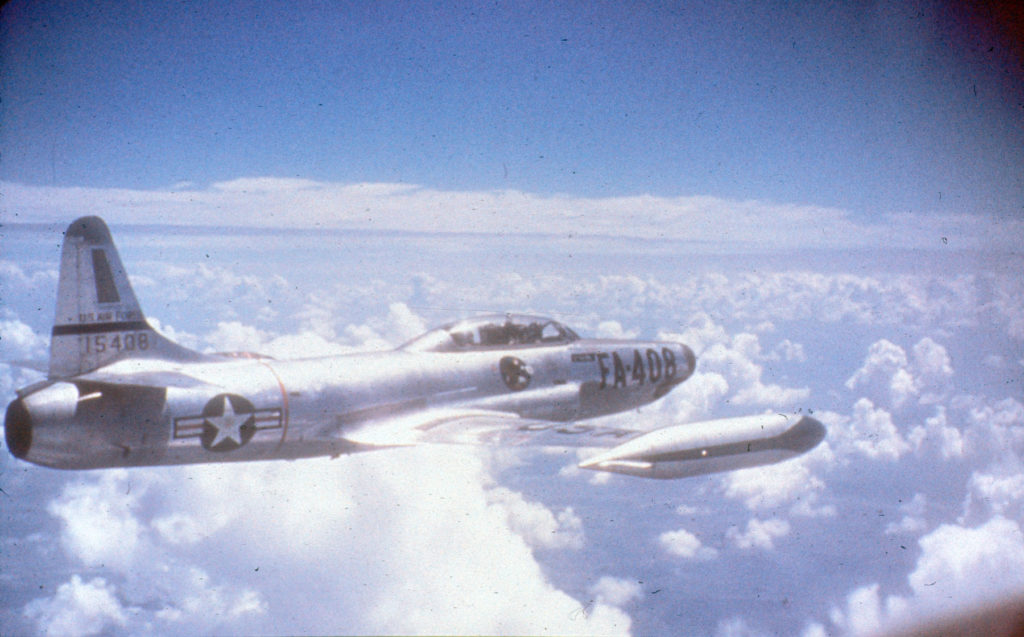
Yet, despite its liability, the jet engine was inevitably the future. Having solved the fuel consumption problems of the early turbojets, the F-82, and the age it represented was destinated to retire.
Its useful life was not long, and by the begging of the fifties, the Air Force had already replaced the F-82 with both the F-89 and F-94 models. At that time, the F-82 got relegated to a second-line aircraft.
Finally, Mustang’s time in the American army, as well as that of the piston-powered fighter, came to an end in 1953. It was then that the last of them retired from service in Alaska, at the 449th Fighter-Interceptor Squadron unit.

The F-82H holds the distinction of being the last propeller-driven fighter used in the front line by the USAF. This was a night-fighter version conditioned for a radar operator instead of a copilot.
The F-82 became the last propeller-driven fighter acquired in quantity by the USAF. It can also be counted as the last tail-dragger (two wheels forward and one in the back), with the exception of the A-1 Skyraider, an attack aircraft.
3 – It was the ultimate piston-powered fighter
As a matter of fact, the F-82 was not only the last piston-powered fighter but also the most capable one.
Confronted with the Lockheed P-38, the F-82 day version was a hundred miles faster. Compared with its predecessor, the Northrop P-61, it proved to be a hundred and fifty miles faster. Moreover, the F-82 had such autonomy that it could remain for more time and cover more distance than these other two aircraft combined.
Judging it from today’s standards (with aircraft such as the F-15 and F-22) it may seem exaggerated to give this plane so much credit. But back in the day, the F-82 happened to be on top of the world for fighters.
Even when the jet era was present, the F-82 was still able to hold its own capabilities. It was more than capable of outrunning F-80’s and F-84’s early models.
4 – Although it seemed two Mustang fuselages joined together, it was a new design
All being said, what makes the P-82 Twin Mustang so distinctive is its looks. Sometimes elegant, simply odd most of the time. One way or the other, one cannot look at it without wondering about how something that looks like two planes merged together can fly properly.
On the other hand, results are easy to compare with other similar-looking models which as well as the F-82 are twin-fuselage aircraft.
Nonetheless, we shall acknowledge that the term “twin fuselage” can be somewhat misleading. It is not as if the Air Force got a few engineers to wrap up two F-51 Mustangs and ta-da, a new aircraft was born.
It is true that both the F-51 and F-82 have many parts in common, which by itself granted an advantage in spare parts management. However, they are definitely two different planes.
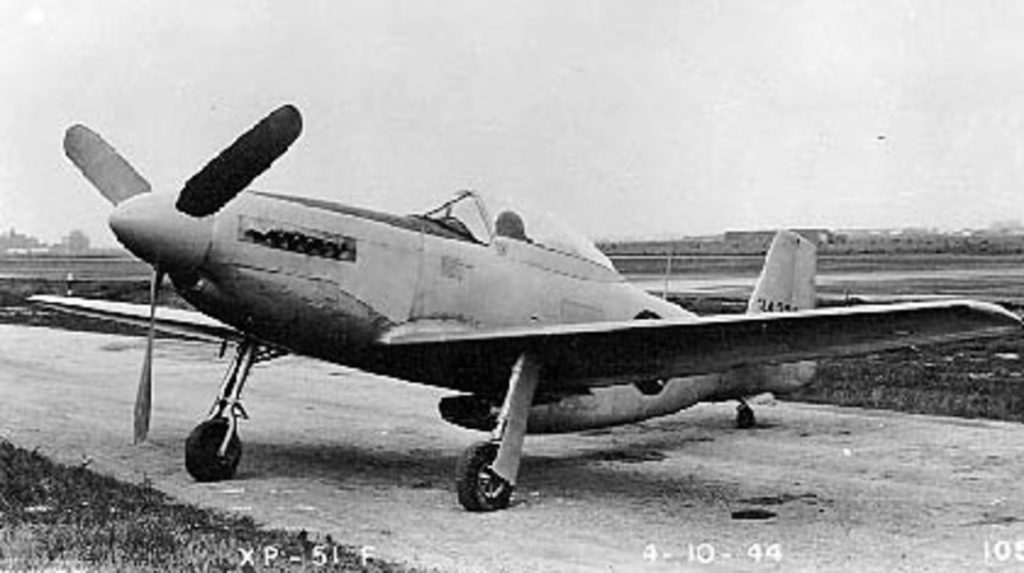
The designers made the F-82 from scratch. Yes, they based on the fuselage of the P-51. To be precise, on the one of the XP-51F, an ultra-lightweight prototype and also a predecessor of the P-51H. But they made so many modifications from a mechanic point of view they cannot be seen as identical designs.
Given this inspiration from the XP-51F, designers didn’t make major changes from the radiator section forward. But on the other hand, the after-fuselage radiator shutters gained 5.4 inches of extension.

Another similarity is that the outer wing panels were, on the XP-82’s prototype, identical to those found on the P-51H. The designers choose these panels since they were of heavier construction than those of the XP-51G.
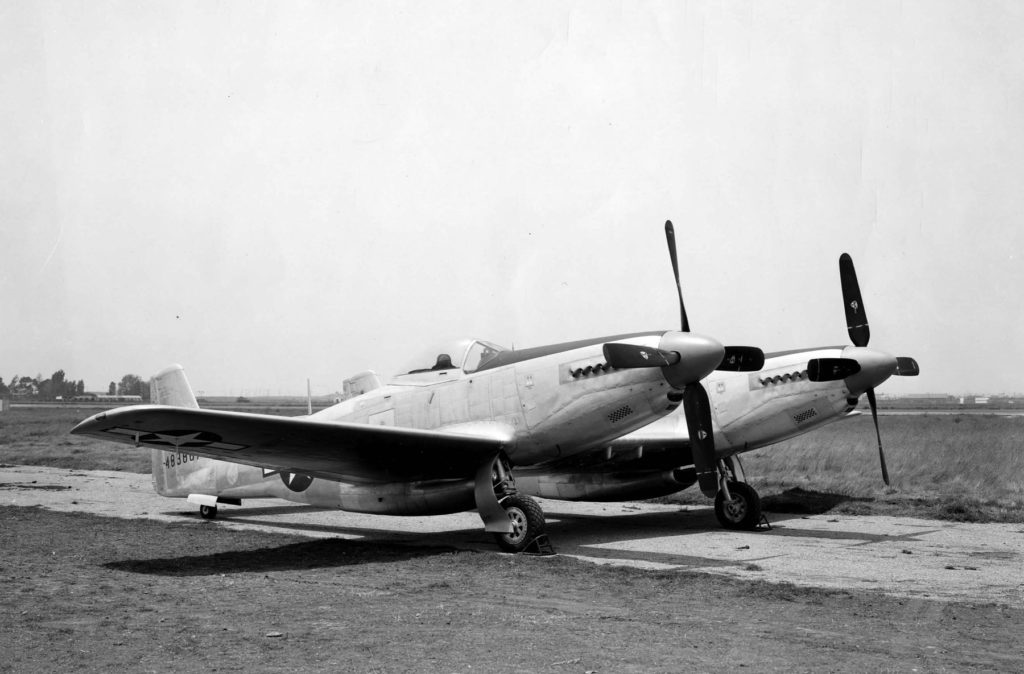
For the engine nacelles, designers of the F-82 used those from the XP-51F, G, and H. Also, the F-82’s canopies, shorter than those found on F, G, and J F-51 Mustangs’, are identical to those on the P-51H. Both planes’ release dates were pretty close to each other. Only four and a half months later than the P-51H, the XP-82 came out.
5 – It set a record that still stands
It may result hard to believe, but this plane holds a record up to this day. Well, actually more than one.
On the one hand, it remains as the holder of the longest flight ever made by a fighter plane. How much? 4,978 miles.
The one who made it possible was Lieutenant-Colonel Robert E. Thacker. Accompanying him as copilot was Lieutenant John M. Ard. The plane they used was the F-82B ”Betty Jo”, a jazzy name that came from the pilot’s wife.

They both departed on Feb. 28, 1947, from Honolulu, Hawaii, to New York. It became the first non-stop flight by any kind of plane from one of those cities to the other. A flight of fourteen hours and thirty-three minutes!
It also owned the record for the heaviest take-off load ever lifted into the air by a fighter plane. Since a flight like that required it to be full of fuel, so they loaded it with seven tons of it!
Nonetheless, it is important to know that the trip wasn’t something made only to show off and brag about a record. It had also a propagandistic objective.
The year 1947 was at the beginning of the Cold War. With an exhibition of flight range like this achieved by the F-82, the US sent a message to the world (and mainly to the Russians).
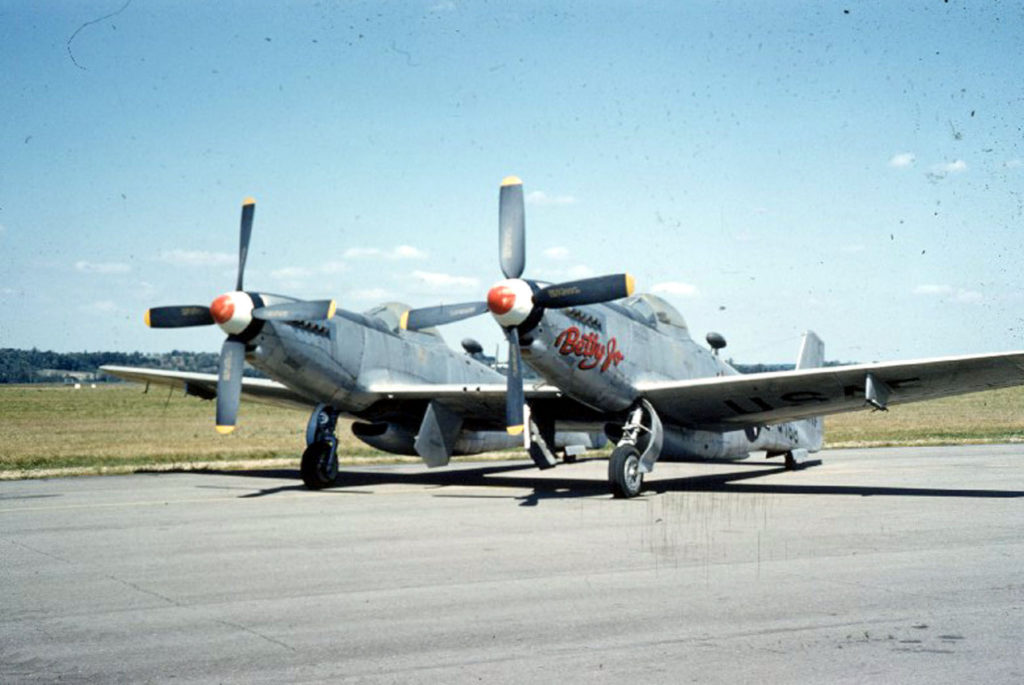
There wasn’t a target far enough that they could not attack effectively. The F-82 showed to be able to escort bombers all the way to any location in the globe.
Getting back to those who made the record, a few days later after completing their flight, both get their medal. The Distinguished Flying Cross, to be precise, by the hands of Carl Spaatz, commanding general of the Air Force.
This distinction is mainly given to those of the Air Force who proved heroism during duty or made extraordinary achievements. Originally, though, it was destinated for those who established flying records such as distance and altitude.
PS: The record F-82, Betty Jo, is currently on display at The National Museum of the United States Air Force, in Dayton, Ohio.
Further reading
6 – It is credited with the first aerial victory of the Korean war
The outbreak of the war required the immediate evacuation of American civilians on Korean soil. The task demanded fighters capable not only of providing coverage but also able to maintain sufficient autonomy. They had to fly from Itazuke’s air base (Japan) to Seoul and back to the airstrip.
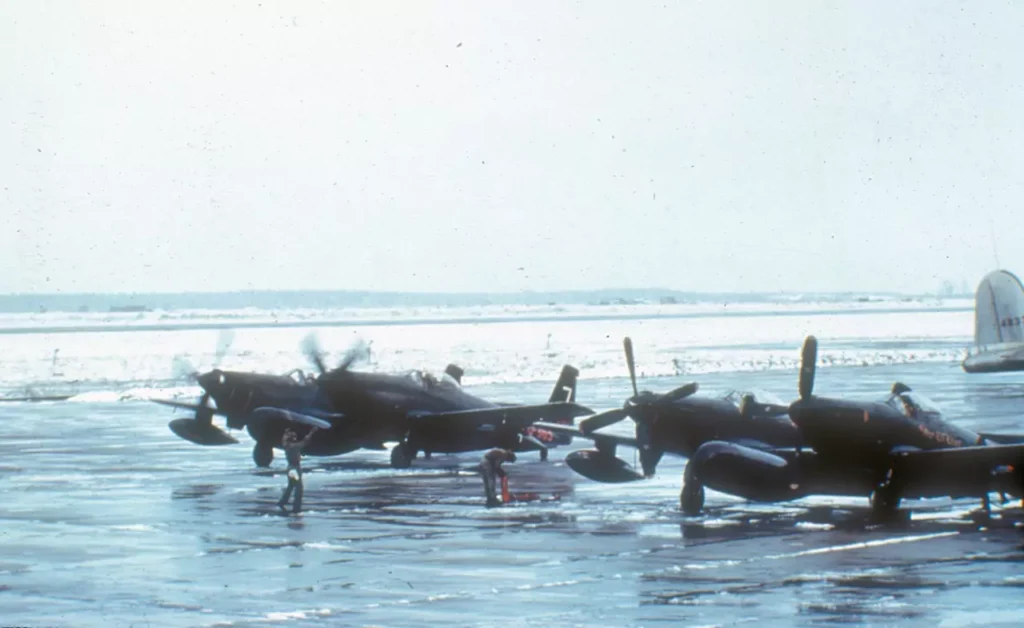
Only the F-82 could successfully fulfill those requirements. The F-80 Shooting Star, a more modern fighter, suffered from insufficient autonomy for the task.
But escorting is far from a pacific task, on the contrary. While at it, two days after the beginning of the war, the F-82s became the target of a pair of enemy aircraft.
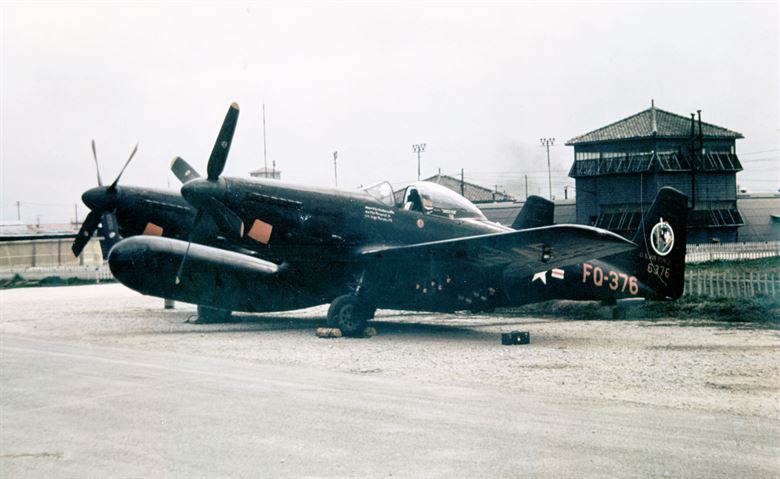
Going across Korean territory, the F-82 from the 68th fighter all-weather squadron were prepared to fight.
In escorting civilian planes, avoiding confrontation can prevent collateral damage. That’s why F-82’s orders were to not open fire unless the enemy had done so first. Yet, that’s exactly what happened.
On 27 June, while escorting a number of Douglas C-54 Skymaster, a gunless transport plane, an F-82 took down a Yakovlev Yak-11.
The Yak-11, a post-second world warplane, was originally designed as a training plane. Nonetheless, it was used in military operations by North Korea.

First on the left is Lt. Charles Moran. In the center is a sergeant writing out an intelligence report on the aerial battle. Second, from the right is Lt. William Hudson. Stooping is Lt. Carl Fraser, the radar operator who flew with Hudson. (U.S. Air Force photo)
The taking of this Korean aircraft was the first aerial victory of the Korean War for any of its size. It belongs to first lieutenant William G. Hudson, piloting one F-82, and Lieutenant Carl Fraser, his copilot.
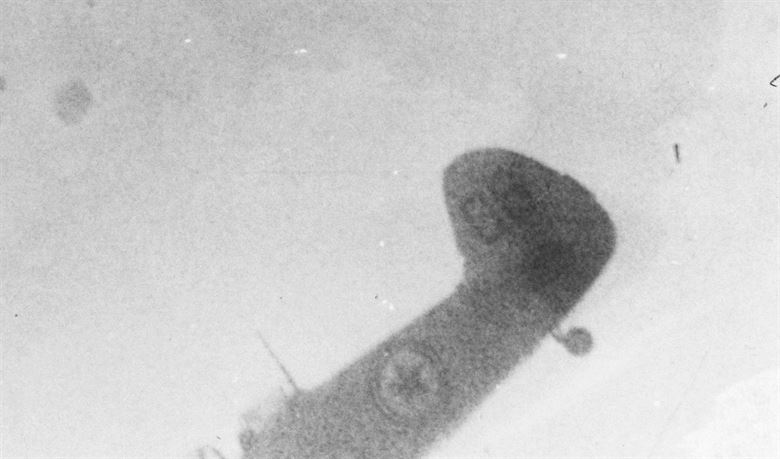
Lt. Hudson’s victory, taken with a malfunctioning camera by his radar operator, Lt Fraser. The North Korean insignia on the Yak-11 and the observer in the rear cockpit is just visible. The observer failed to parachute and was killed when the plane crashed. The pilot bailed out, but South Korean troops shot him to death after he fired at them with a handgun instead of surrendering. (U.S. Air Force photo)
The F-82 continued participating in operations in Korea until March 1952. This war brought jet aircraft to the forefront. Yet, underestimating propeller planes proved to be fatal.
Further reading
7 – Only one Air Force Group ever used the F-82 Twin Mustang for its originally designed mission
We said earlier that the distinctive feature of the F-82 was its capability to stand long flights. To such an extent, it excelled at it that, after World War II, it was the only aircraft capable of escorting long-range bombarders.
For this model of the P-82, the P-82E, the manufacturer chose a different engine than the original. So this fighter came with an Allison V-1710, a motor that the government wanted for it since its early development stage.
Acquiring the motors from Rolls-Royce became more and more expensive. Not to ignore the fact that GM made the Allison motors, the same company that owned a big percentage of North American Aviation.
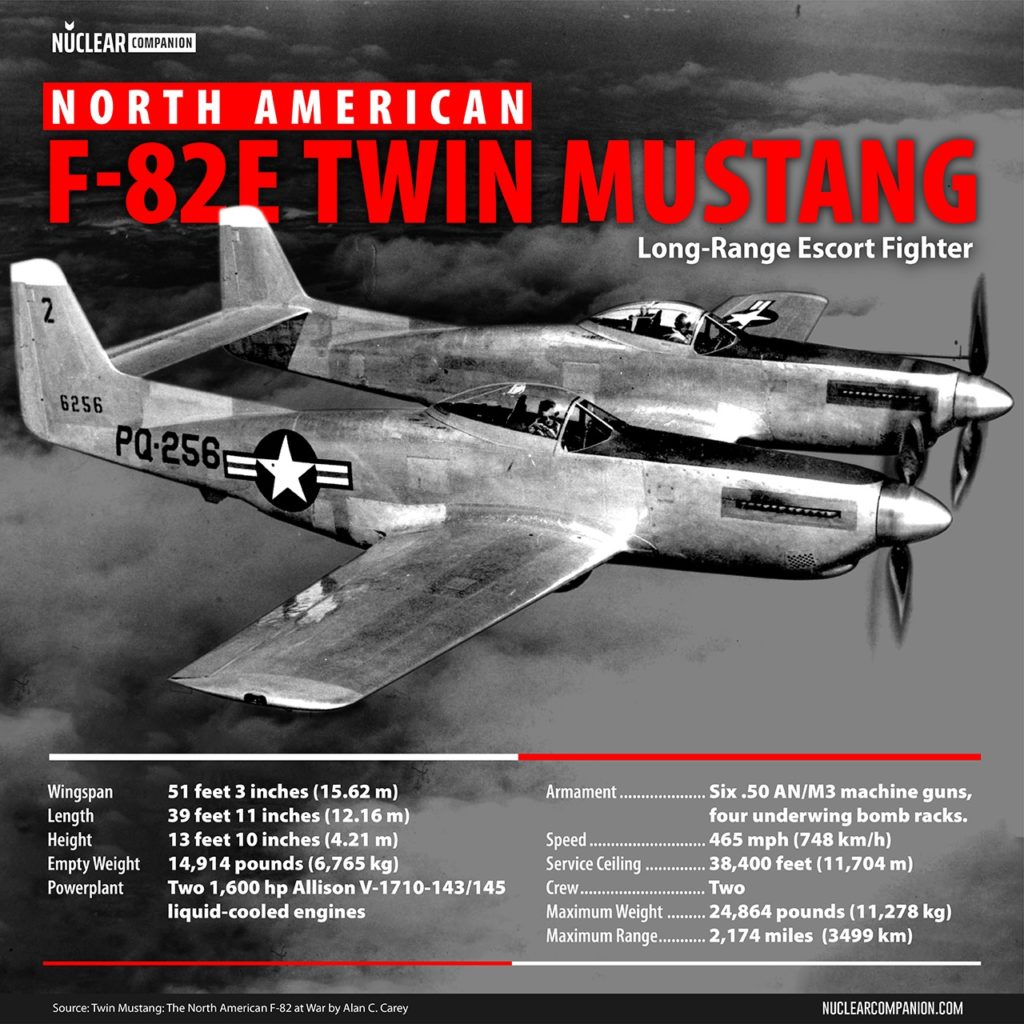
Economic affairs apart, the P-82E variation would be the first one of this aircraft to be mass-produced. Most of them went to the 27th Fighter Escort Group. They were assigned to the recently created Strategic Air Command (SAC) as long-range escorts for bombers such as the B-29, B-50, and B-36.
Escorting, nonetheless, was just one of its functions. As we stated early, the flight records made by the F-82 had a political objective, but that wasn’t an isolated case.
The F-82Es made several long flights in order to send a message to the Soviets about US potential to escort long-range bombarders.

Holding the remark of being the only fighter capable of long-range escorting, the F-82 seemed to have found its place, but not for long. Its original purpose came to an end by the beginning of 1950 with the introduction of the jet Republic F-84 Thunderjet.
The USAF, then, dismantled all the F-82Es to use their parts in those F-82s destinated for other roles.
What other roles are we talking about?
8 – The most extensive use of the F-82 Twin Mustang was in the air defense role as an interceptor fighter
The thing is that due to its late release date, as well as the arrival of the jet-propulsion technology, in no time the F-82 found itself at a crossroads. It was destinated to lose the place it was initially designed to occupy.
Still, it wasn’t the end of the road for it. Given its versatility, it ended up serving as a night fighter.
The US Army was aware that the USSR had a long-range bombarder capable of attacking targets all the way to their land. That bomber was the Tupolev Tu-4, a copy of the North American bombardier B-29.
As soon as September of 1945, with World War II already finished, the Air Force asked for an evaluation of the F-82. They wanted to know if it was capable of substituting the Northrop P-61 Black Widow as a night fighter. This last aircraft had important issues related to its radar system.
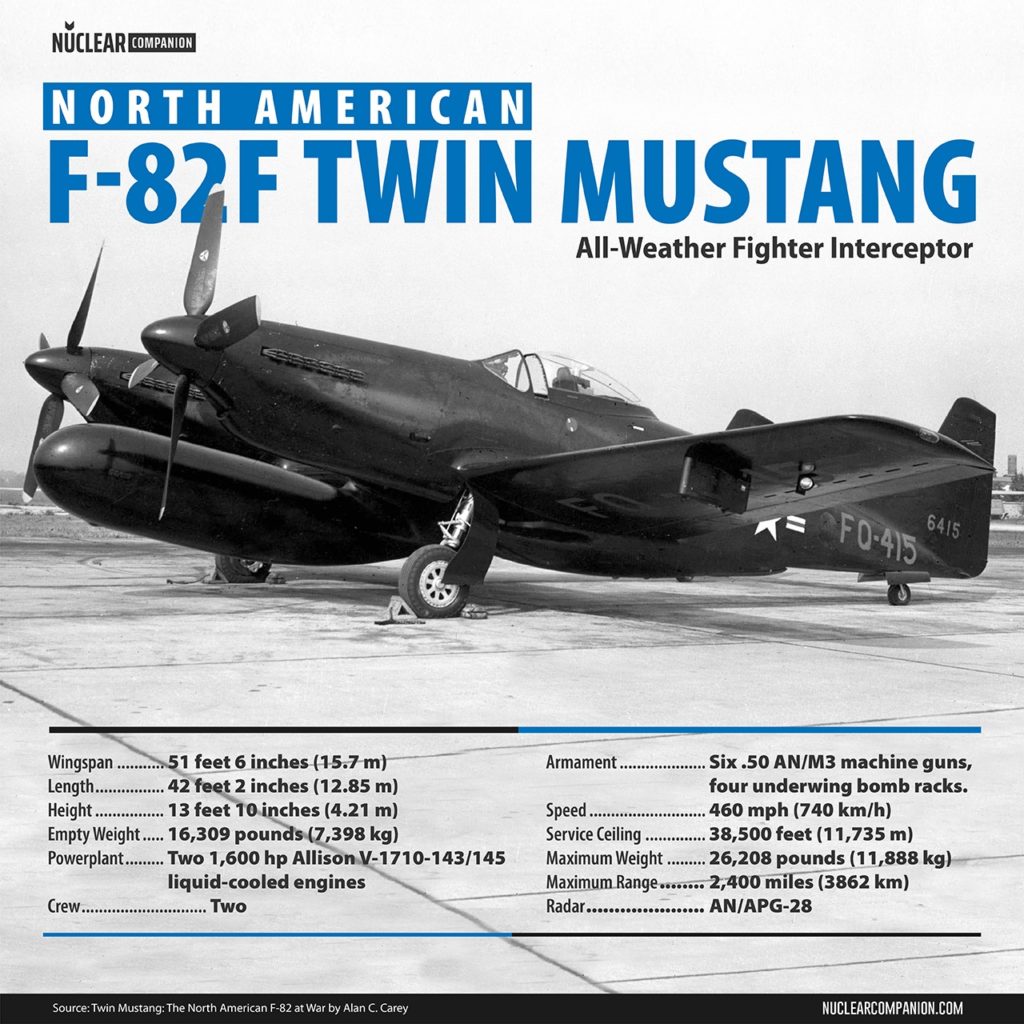
Shortly after, in order to fulfill a defensive role, the F-82 shifted into an interceptor. What is an interceptor? An aircraft with the sole purpose of intercepting and taking down aerial threats.
For this new function, the copilot spot gave place to a radar operator, and the plane received a big radar pod located under the center wing. The pod protruded past the propellers in order to eliminate any interference in the radar’s signal.
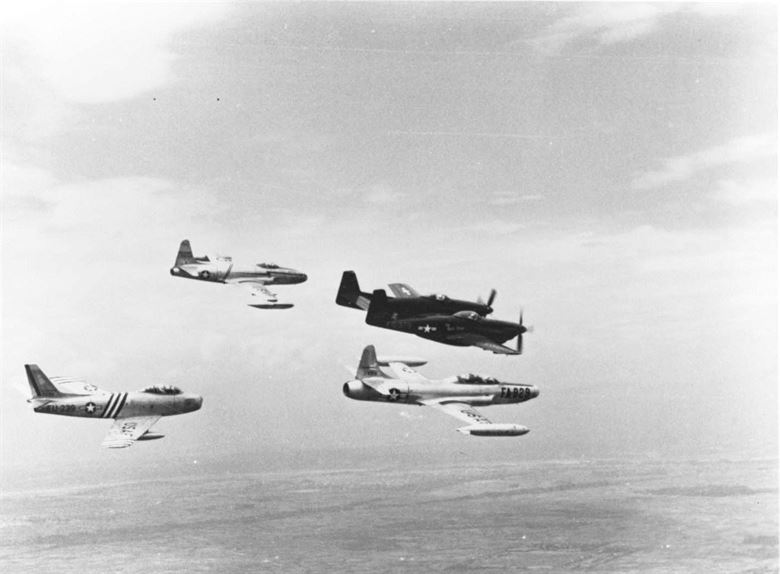
USAF fighters. The propeller-driven F-82 (upper right) was the primary night fighter. The faster, swept-wing F-86 Sabre (lower left) took over the day fighter role from the F-80 in late 1950, while the jet-powered F-94 (lower right) replaced the F-82 in 1951. (U.S. Air Force photo)
After making tests with an F-82C prototype, the new versions were the F-82F and F-82G. By 1948, more than two hundred operated in the Air Defense Command (ADC). By the start of the Korean War, while the North American F-86 Sabre jet engine was the day fighter, the night fighter role was kept by F-82 Twin Mustang.
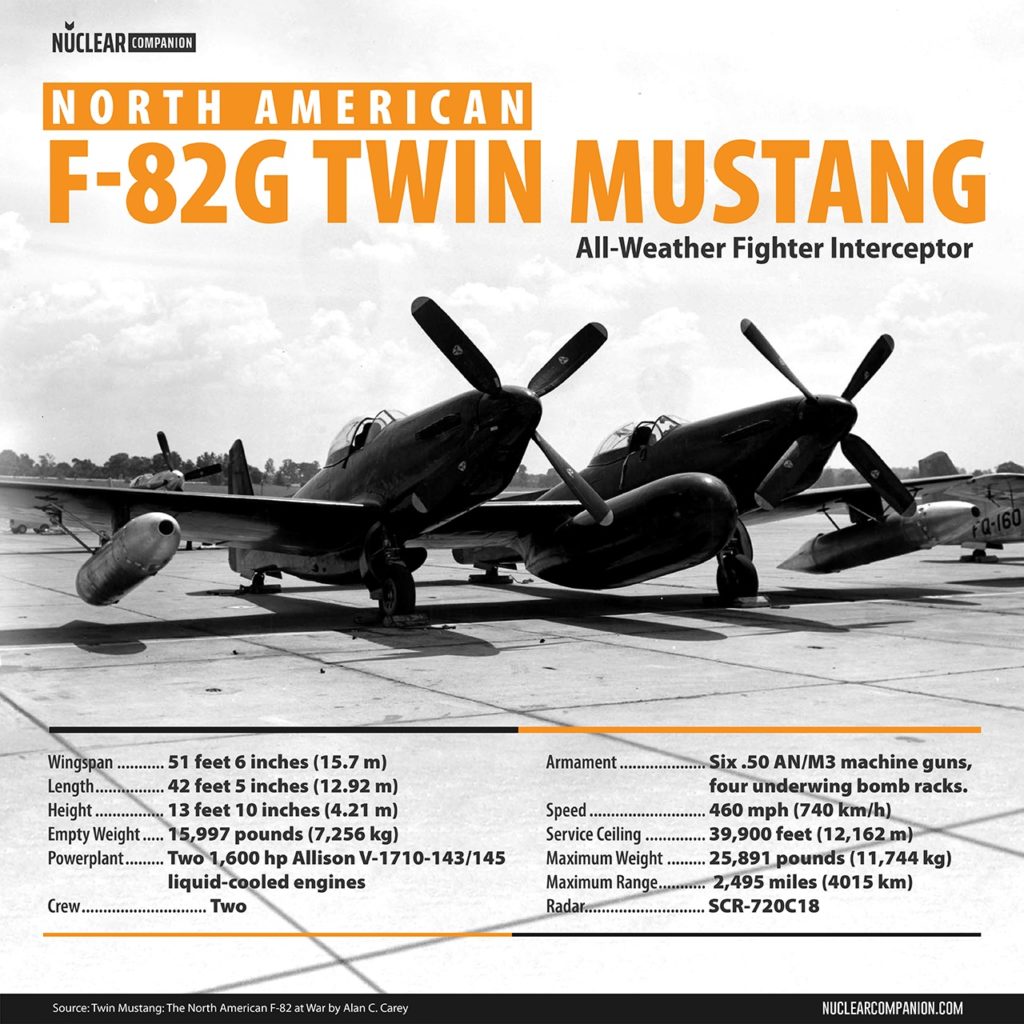
Also, a small number of these F-82s were adapted to all-weather to serve in Alaska. Under the name of F-82H, some even were equipped with an anti-icing system for their engine and propeller blades.

In 1952, when the F-82s were out of the Korean conflict, they were modified to the F-82H configuration and sent to serve in the Alaskan Air Defense Command. They would do so till their last days.
9 – One pilot or two pilots?
At first, the fact that the F-82 had two cabins may seem confusing. Does this plane require two pilots to fly? And if not, what is the second seat for?
The thing is that the function of that second seat changed over time. The original versions, the escort ones, were dual-control. The pilot sat on the left cabin, while the copilot was on the right.
Both cockpits were similar and had all the required mechanisms for piloting. The main pilot cockpit, however, had the full control panel of the plane mechanisms, such as the wing flaps. It also had access to an autopilot system, which in case of emergency the copilot was also capable of use.
The existence of dual controls was an important part of the aircraft’s design. Without a second pilot, it was impossible for the plane to cover such long distances. Also, a sole pilot may suffer from fatigue and wouldn’t be able to perform without taking turns with a copilot.
That’s why when the USAF converted the F-82 into a night and all-weather fighter, its flight range became shorter. The incorporation of a radar system required an operator to manage the radar. There wasn’t room for a copilot.
Further reading
Bibliography
- Twin Mustang: The North American F-82 at War by Alan C. Carey
- Double Menace P-82 Twin Mustang by David McLaren
- F-82 Twin Mustang (Mini in Action No. 1608) by Larry Davis
- Encyclopedia of U.S. Air Force Aircraft and Missile Systems (Volume I) by Marcelle Size Knaak
Now it is your turn
What do you think about the F-82 Twin Mustang?
Or maybe you have a question.
Let me know by leaving a quick comment below right now.
when I was 10 years old me and my neighbor went to a crash site on are bicycle’s just on the north edge
of town (Red Bluff, Calif.) to see a crash site of a P-82 twin Mustang , that was on Dec. the 10th 1950.
2 aboard and both had been killed , had engine problems and was headed for the local air port.
I remember it was a real mess and the local national guard ran us off , but had told us it was a twin
Mustang Fighter from the Redding Ca. Airport
Jack, thanks for sharing your experience! Colonel George Prentice was killed during that accident. He was the commander of the 325th Fighter All-Weather Squadron. Captain William Athas, who accompanied Prentice, bailed out to safety. The Plane was based in McChord AFB and was en route to Victorville, Cal. on a routine flight when it developed engine trouble.
My grandpa’s uncle fought in KW as Volunteer Army, he once told my grandpa that he saw a shining “two body plane” when he was digging trenches near a road.
DId F-82 Have external fuel Tanks!!!
It could take external tanks. Look up “Betty Jo, P-82b”. Still holds the record for longest piston flight.
My dad H.W. “Rocky” Jones, Jr. was the pilot of the “Mid Night Sinner” F-82G (FQ-390) in Korean War stationed at Ita Zuke, Japan with the 4th All Weather Night Fighter Squadron. I believe his R.O.’s name was Dewitt “Talmage” Allred. His plane is featured in a 1/48 model kit from Model Craft with his name actually on the instruction sheet but not the box art, and is also in the infamous four plane photo you see all over the internet as well as many other publications, including the Squadron F-82 mini book. He was in the RCAF (where my oldest sister was born) in Canada and later he became a USAF fighter pilot in both WWII as well as Korea flying many jets after the last prop plane ever in war the F-82 Twin-Mustang was retired. After the Korean War was over, he became a test pilot for Hughes Aircraft based out of Culver City, CA. I was born in L.A. in 1959 and have another sister born in 1955 also from L.A. My dad RIP was killed racing a Formula-1 plane in TX on 070790 at age 69.
Thanks so much for sharing, Roger. Your father’s story is incredible — from flying the F-82G “Mid Night Sinner” in Korea to serving in both the RCAF and USAF, and later becoming a test pilot for Hughes Aircraft. It’s amazing that his aircraft is featured in kits and photos still seen today — a real testament to his legacy.
I’m very sorry to hear of his passing. It’s clear he left a lasting mark on aviation history, and your memories help keep that story alive. Thank you again for sharing it here.